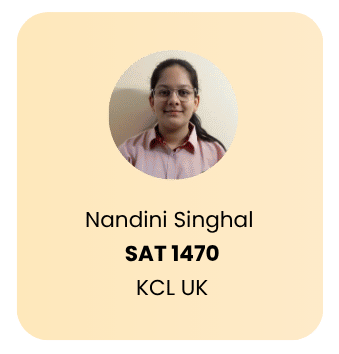Are you feeling overwhelmed about taking the PTE Academic exam? You’re not alone. At EduQuest, we’ve guided countless Indian students through their PTE journey, transforming their anxiety into confidence. Today, we’re sharing our expert insights to help you understand the exam format and master each section with proven strategies.
Understanding the PTE Academic Exam Structure
The PTE Academic isn’t just another English proficiency test – it’s your gateway to studying abroad at prestigious universities. But here’s something many students don’t realize: understanding the exam format is half the battle won! Let’s break down each section and uncover the strategies that have helped our students excel.
Speaking & Writing (54-67 minutes)
Would you believe that the most challenging part of the Speaking section isn’t actually speaking? It’s managing your nerves! Here’s what you need to know about this combined section:
Speaking Tasks Include:
- Personal Introduction (not scored but crucial for practice)
- Read Aloud (crucial for both speaking and reading scores)
- Repeat Sentence (tests your listening and speaking abilities)
- Describe Image (the task many students find most challenging)
- Re-tell Lecture (combines listening and speaking skills)
- Answer Short Questions (tests your spontaneous response ability)
Pro Tip: Record yourself speaking English daily. It might feel awkward at first, but this simple practice can dramatically improve your fluency and confidence.
Writing Tasks Include:
- Summarize Written Text (20 minutes per task)
- Essay Writing (20 minutes per essay)
Expert Insight: Many students waste precious time overthinking their essays. Instead, follow our tried-and-tested 5-minute planning approach: 2 minutes for understanding the prompt, 3 minutes for outlining your response.
Reading (29-30 minutes)
Think reading is just about understanding the text? Think again! The PTE Reading section tests multiple skills simultaneously. Here’s what you’ll encounter:
- Multiple-Choice Questions (single and multiple answers)
- Re-order Paragraphs (the secret scoring booster!)
- Fill in the Blanks (both reading and writing variants)
- Reading & Writing: Fill in the Blanks
Strategy Spotlight: For re-order paragraphs, look for connecting words and time references. They’re like puzzle pieces that help you see the bigger picture.
Listening (30-43 minutes)
Here’s something fascinating about the Listening section: it’s not just about hearing the words – it’s about understanding context and implications. The section includes:
- Summarize Spoken Text
- Multiple-Choice Questions
- Fill in the Blanks
- Highlight Correct Summary
- Select Missing Word
- Highlight Incorrect Words
- Write from Dictation
Game-Changing Tip: Use the 10-second preparation time before each audio to scan the questions and predict possible answers. This technique has helped countless EduQuest students improve their listening scores dramatically.
Expert Strategies for Each Section
Speaking Section Mastery
Remember when you learned to ride a bicycle? It seemed impossible at first, but with practice, it became second nature. The same applies to PTE Speaking. Here’s our proven approach:
- Perfect Your Pronunciation
- Focus on word stress and intonation
- Practice with tongue twisters daily
- Record and compare your speech with native speakers
- Master Time Management
- Stick to the given time limits religiously
- Practice with a timer at home
- Learn to pace yourself naturally
Writing Section Success
Writing isn’t just about grammar – it’s about presenting your ideas clearly and coherently. Our students who score highest in writing follow these guidelines:
- Essay Structure
- Introduction (2-3 sentences)
- Two body paragraphs (4-5 sentences each)
- Conclusion (2 sentences)
- Time Management
- Reading and planning: 5 minutes
- Writing: 15 minutes
- Reviewing: 2-3 minutes
Reading Section Strategies
Want to know what sets top scorers apart in the Reading section? It’s not just their vocabulary – it’s their approach:
- Skim and Scan Effectively
- Read the first and last sentences of each paragraph
- Look for keywords and topic sentences
- Practice speed reading regularly
- Build Academic Vocabulary
- Focus on common academic word lists
- Learn words in context rather than in isolation
- Practice using new words in sentences
Listening Section Tips
Here’s a secret about the Listening section: success isn’t just about understanding English – it’s about strategic note-taking and active listening. Try these approaches:
- Note-Taking Techniques
- Use symbols and abbreviations
- Focus on key points rather than every word
- Practice summarizing while listening
- Active Listening Strategies
- Predict content from titles and images
- Focus on the speaker’s tone and emphasis
- Practice with various accents and speaking speeds
Common Mistakes to Avoid
Let’s learn from others’ experiences. Here are some pitfalls our students encountered – and how you can avoid them:
- Speaking Section
- Speaking too fast or too slow
- Ignoring pronunciation patterns
- Getting stuck on difficult words
- Writing Section
- Using memorized templates without adaptation
- Writing too much or too little
- Poor time management
- Reading Section
- Spending too much time on difficult questions
- Not reading instructions carefully
- Overlooking context clues
- Listening Section
- Taking too many notes
- Missing key information while writing
- Not utilizing the repeat option effectively
Preparing for Success
Remember, achieving your target PTE score isn’t just about knowing the format – it’s about smart preparation and consistent practice. At EduQuest, we’ve developed a comprehensive preparation approach that has helped thousands of students achieve their dream scores.
Your Next Steps
- Take a Diagnostic Test
- Understand your current level
- Identify weak areas
- Set realistic goals
- Create a Study Schedule
- Allocate time for each section
- Include regular practice tests
- Plan review sessions
- Use Quality Materials
- Official PTE practice resources
- EduQuest’s specialized study guides
- Regular mock tests with feedback
Frequently Asked Question
How long should I prepare for the PTE?
Most students need 2-3 months of dedicated preparation for optimal results.
Is the computer-based format difficult?
Not with proper practice! The format actually makes scoring more objective and fair.
What's the best way to improve speaking scores?
Regular practice with recording and feedback is key. Consider joining EduQuest’s specialized speaking workshops.
How different is PTE from IELTS?
While both test English proficiency, PTE’s computer-based format and integrated tasks require specific preparation strategies.
Can I prepare for PTE while working/studying?
Yes! We help many working professionals and students create balanced study plans that fit their schedules.













